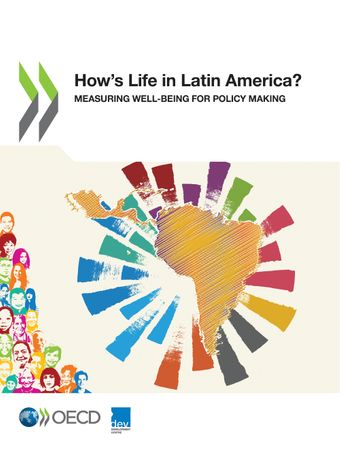Uruguay

How’s Life in Latin America?
Measuring Well-being for Policy Making
Many Latin American countries have experienced improvements in income over recent
decades, with several of them now classified as high-income or upper middle-income
in terms of conventional metrics. But has this change been mirrored in improvements
across the different areas of people’s lives? How’s Life in Latin America? Measuring
Well-being for Policy Making addresses this question by presenting comparative evidence
for Latin America and the Caribbean (LAC) with a focus on 11 LAC countries (Argentina,
Brazil, Chile, Colombia, Costa Rica, the Dominican Republic, Ecuador, Mexico, Paraguay,
Peru and Uruguay). Spanning material conditions, quality of life, resources for future
well-being, and inequalities, the report presents available evidence on well-being
both before and since the onset of the pandemic, based on the OECD Well-being Framework.
It also identifies priorities for addressing well-being gaps and describes how well-being
frameworks are used in policy within Latin America and elsewhere around the world,
providing lessons for governments on what is needed to put people’s well-being at
the centre of their action. The report is part of the EU Regional Facility for Development
in Transition for Latin America and the Caribbean.
Published on October 28, 2021Also available in: Spanish
TABLE OF CONTENTS
| Foreword | |
| Reader’s guide | |
| Executive summary | |
| How’s Life in Latin America? Introduction and key findings | |
| Material conditions in Latin America | |
| Quality of life in Latin America | |
| Resources for future well-being in Latin America | |
| Well-being inequalities across social groups and territories | |
| Policy through a well-being lens: Experiences from LAC and wider OECD countries |
Powered by OECD iLibrary
Key facts
77% of unpaid work
Over three-quarters of unpaid work is done by women in LAC countries, who spend 18.7
more hours per week performing unpaid work than men, such as care and home maintenance
tasks, nearly 4 hours higher than the OECD average gap.
Household consumption rose 36%
Latin American countries increased their average household consumption expenditure
by more than 1/3 since 2000 compared to the OECD average of ¼. Access to clean water,
the Internet and good housing also increased.
Life satisfaction is falling
Despite consistent gains in GDP per capita, life satisfaction in Latin America peaked
in 2013 and has since fallen below 2010 levels. Data suggest that the drop in life
satisfaction seen in LAC countries during the pandemic was much greater than the OECD
average change.